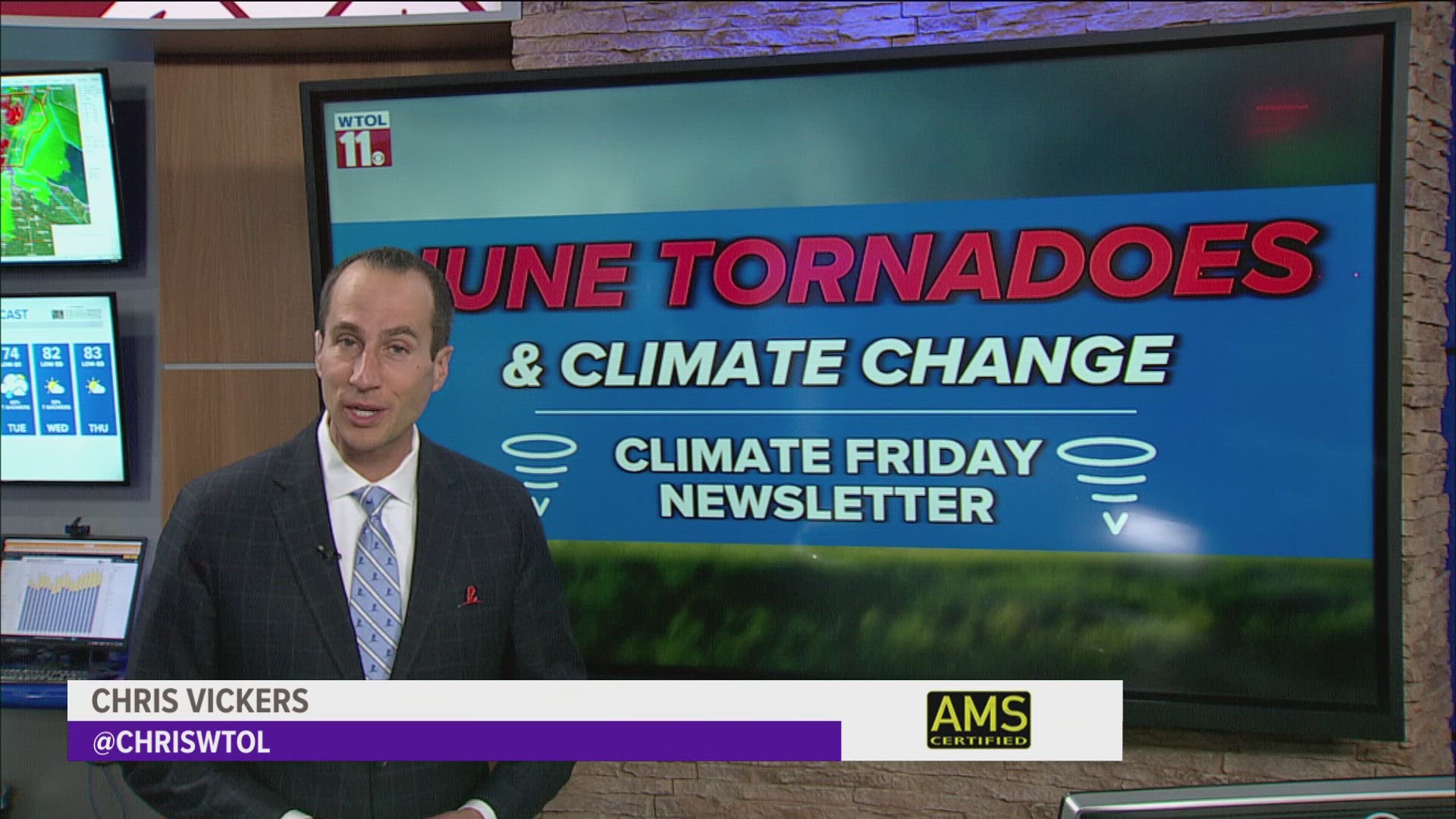TOLEDO, Ohio — One of the largest tornado outbreaks in our area in recent times has etched itself into the record books as one of the greatest (10) tornado outbreaks in the local area in history.
This has now surpassed the November 2002 Veteran's Day outbreak that included the F4 Van Wert tornado. While June 15's strongest tornado was EF-2 with max winds reaching 130 mph, this was still a historically significant event for our area.
In this week's Climate Friday, we will situate this outbreak in the context of what affect climate change could have on tornadoes and outbreaks such as what happened on the evening of June 15.

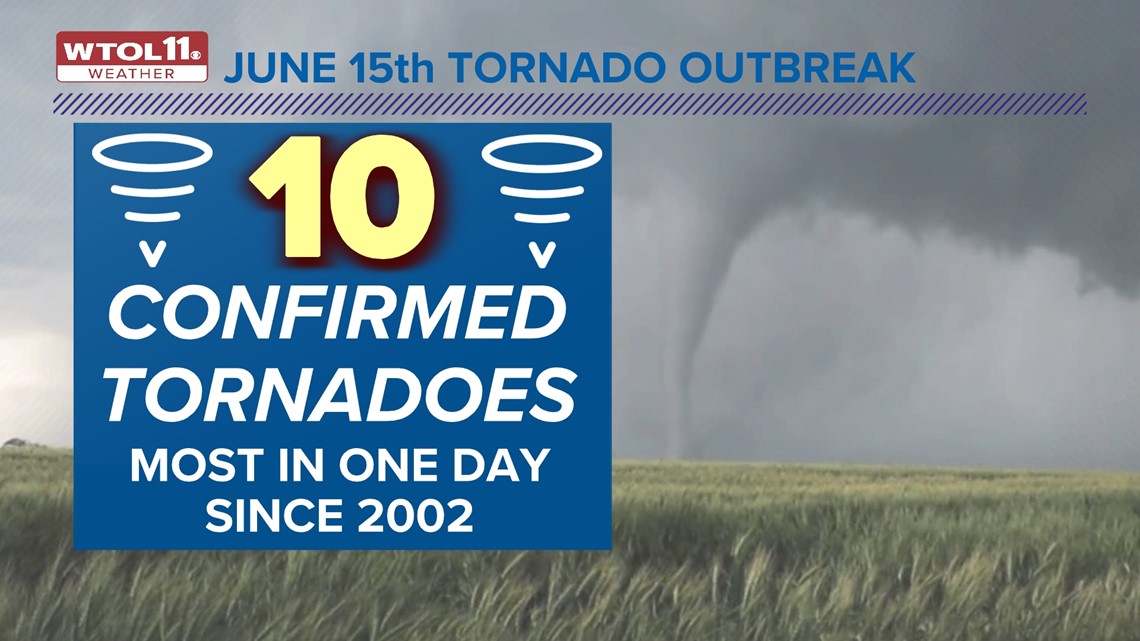
First and foremost, meteorologist are extremely skilled in detecting and warning for tornadoes before they even develop. But the honest truth is, not all tornadoes produced by storms are detected.
Collectively, the National Weather Service issues on average nearly 2,400 tornado warnings per year. There is a Probability of Detection (POD) of 81% warning before an EF-2 or greater tornado develops. The average warning lead time is 14 minutes.
In our case, all the tornadoes that happened on June 15 were warned at the time, except the initial tornado that touched down in Point Place. While we can express frustration, this can and does happen.
This tornado rapidly developed in a few short moments as it interacted with an established lake boundary which enhanced the shear and spin. We can use this to learn and get better.

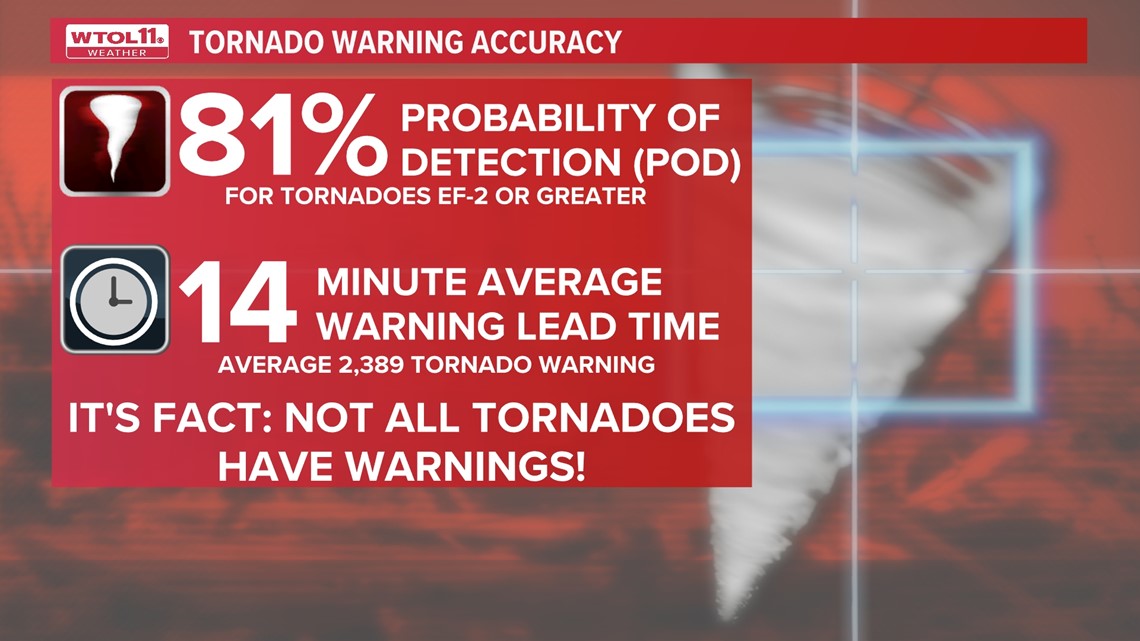
From a climate perspective, this tornado outbreak was huge. The entire state of Ohio averages 22 tornadoes per year. On a single day, 10 total tornadoes were reported in northern Ohio, nearly half the average total for the year.

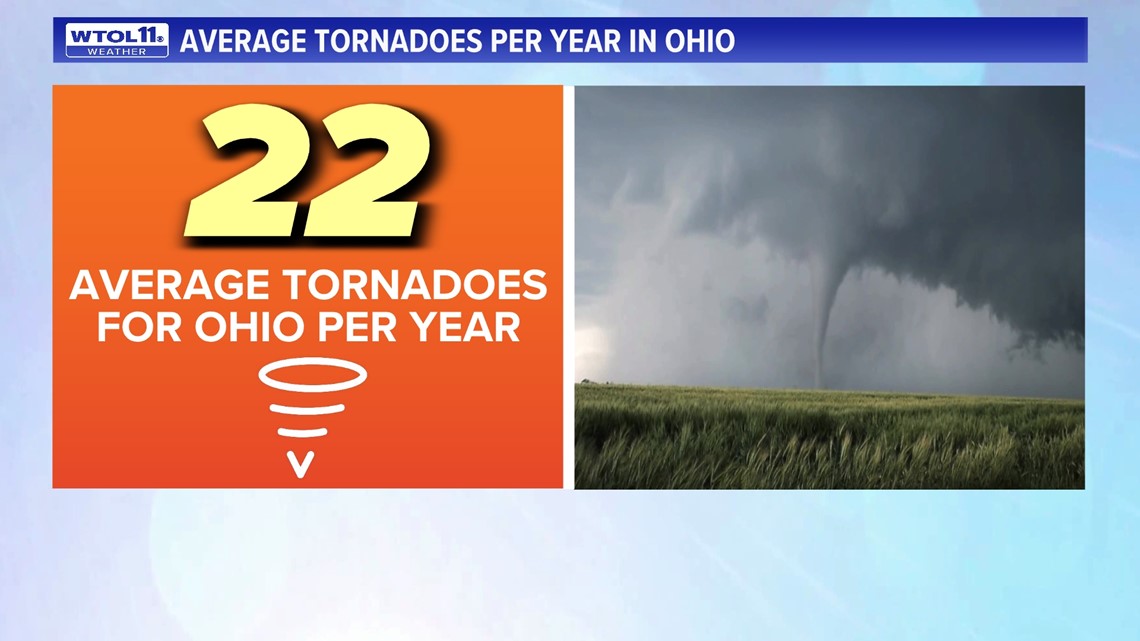
Is climate change impacting or increasing tornado frequency? That answer is considerably less clear.
In a warming climate, wind shear in the atmosphere over time tends to decrease. This is attributed to the decrease in the polar jet stream due to less of a contrasting temperature gradient from the tropical to the polar regions.
Wind shear is an absolutely crucial ingredient for severe storms and, in particular, tornadoes. Less wind shear in a climate perspective would be a factor that may reduce tornadoes. But there is more!

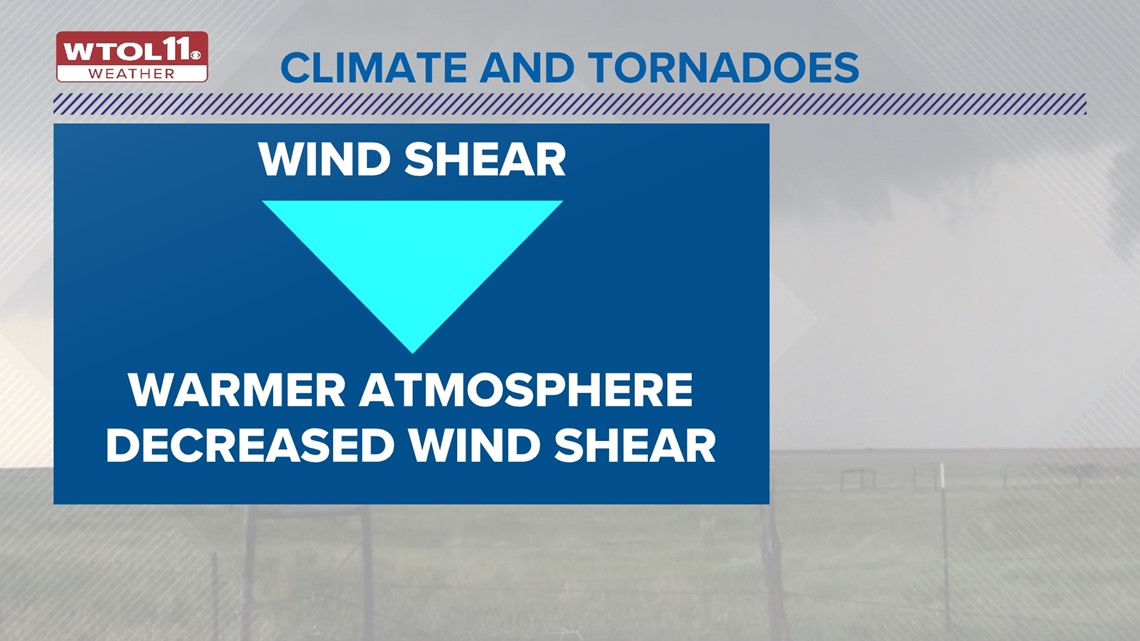
In a warming climate, we have an increase in atmospheric moisture. Moisture is another key ingredient to thunderstorms and the evolution of tornadoes. Additional moisture may fuel more intense supercell thunderstorms and also act to expand and lengthen the tornado season both geographically and temporally.

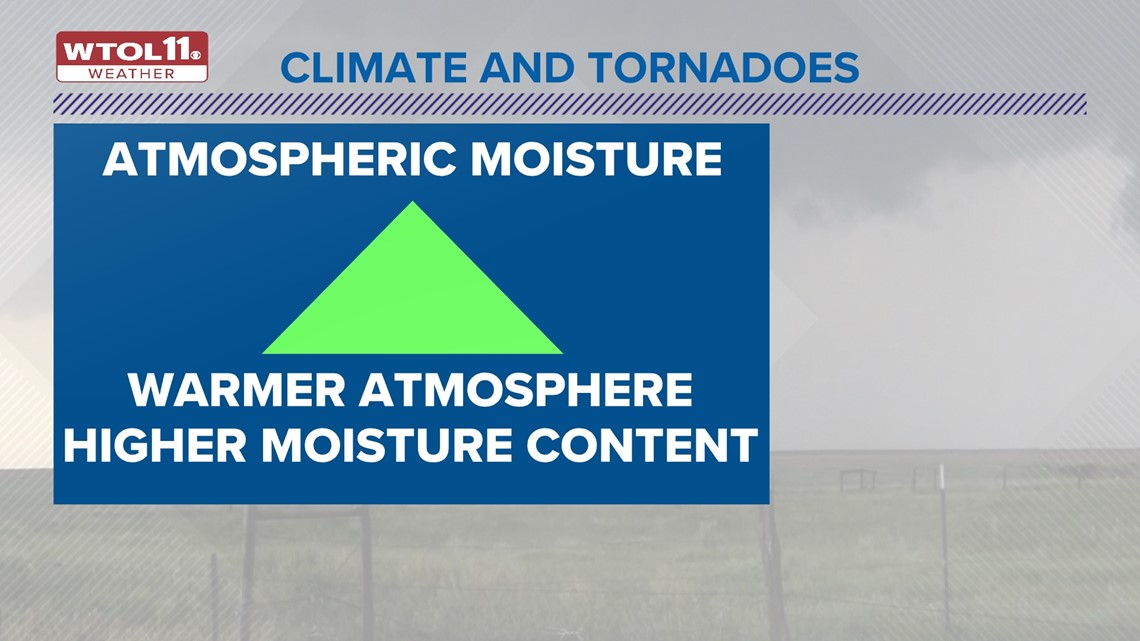
What does the data say? Have reported tornadoes been on the increase? The answer is yes, but not so quickly.
The vast majority or entirety of the increase is attributed to better detection, observation and radar products. The normalized average or mean of tornadoes over the past several decades, especially with respect to major tornadoes, has been flat to slightly decreasing.

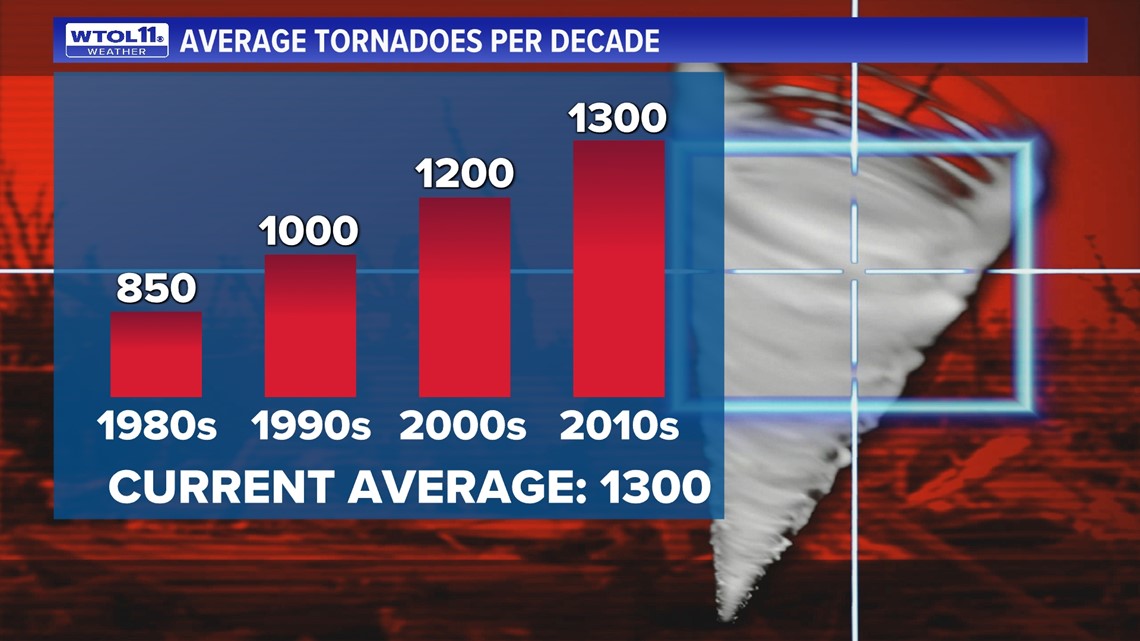
While we only average four tornadoes in the state of Ohio in the month of June, the recent events of June 15 remind us to always stay aware.

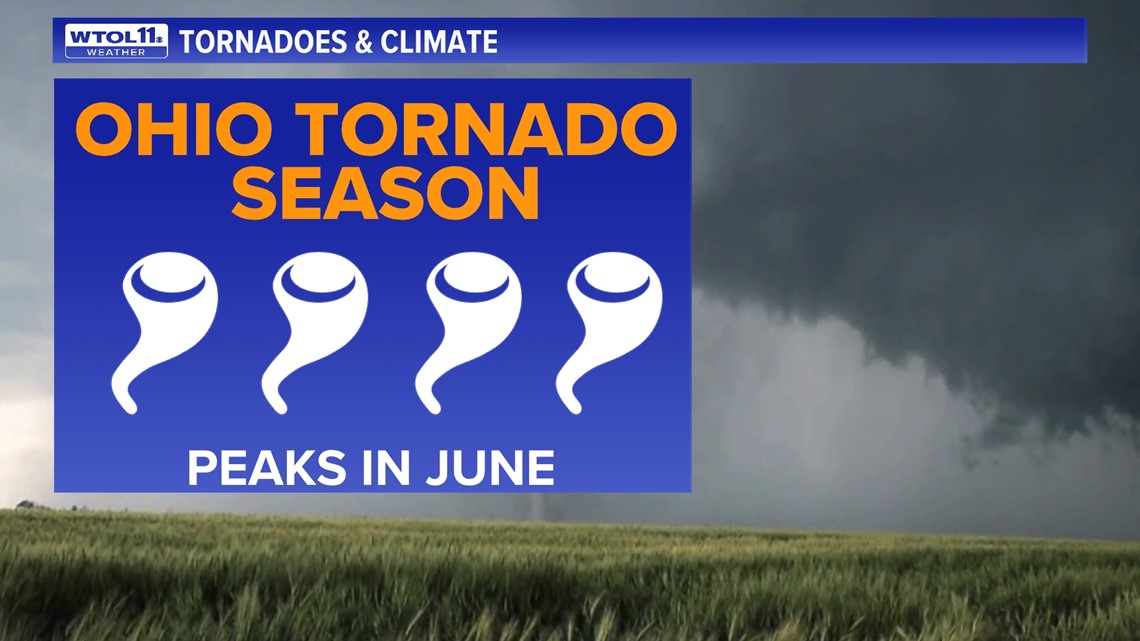
MORE FROM CLIMATE FRIDAY ON WTOL 11

